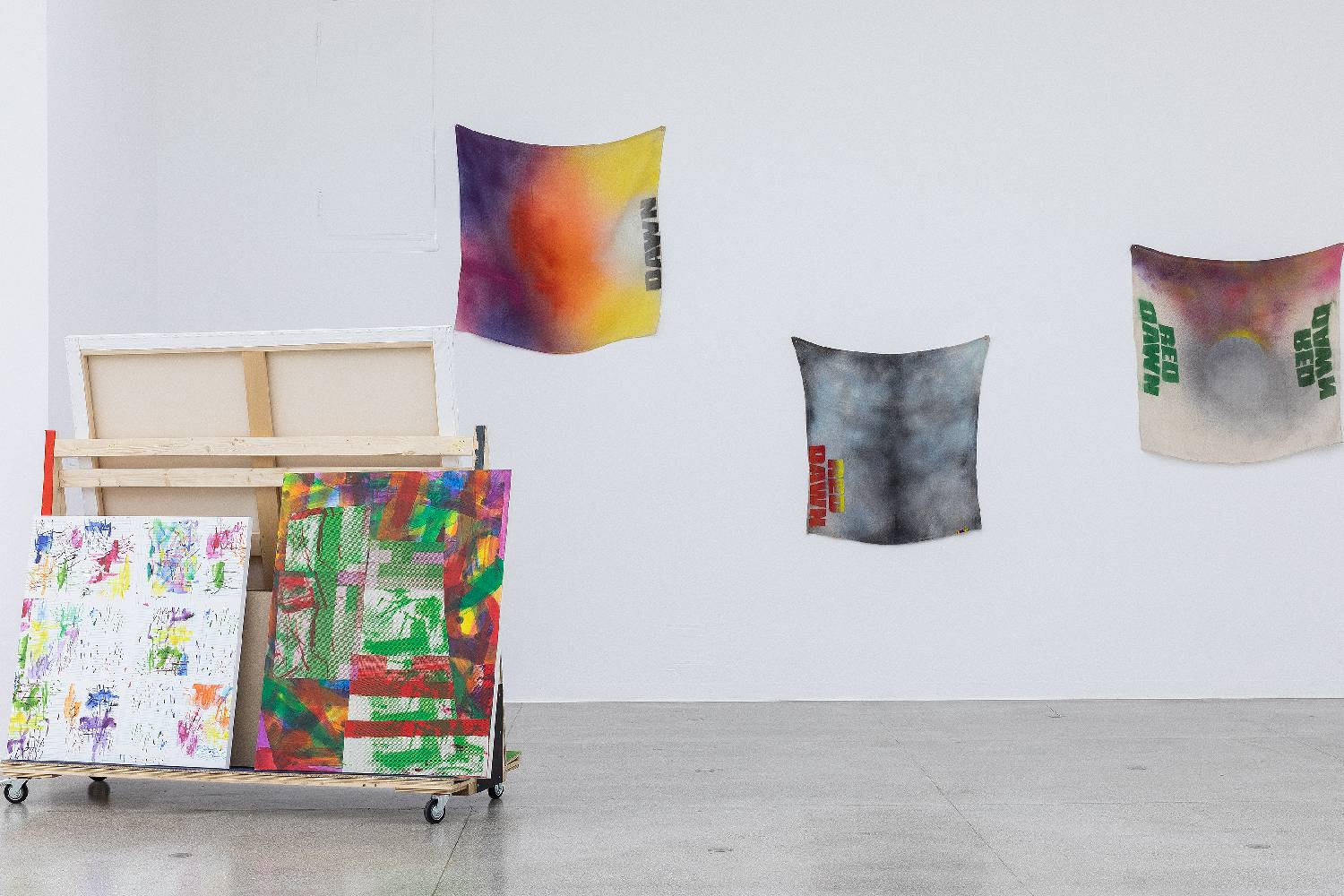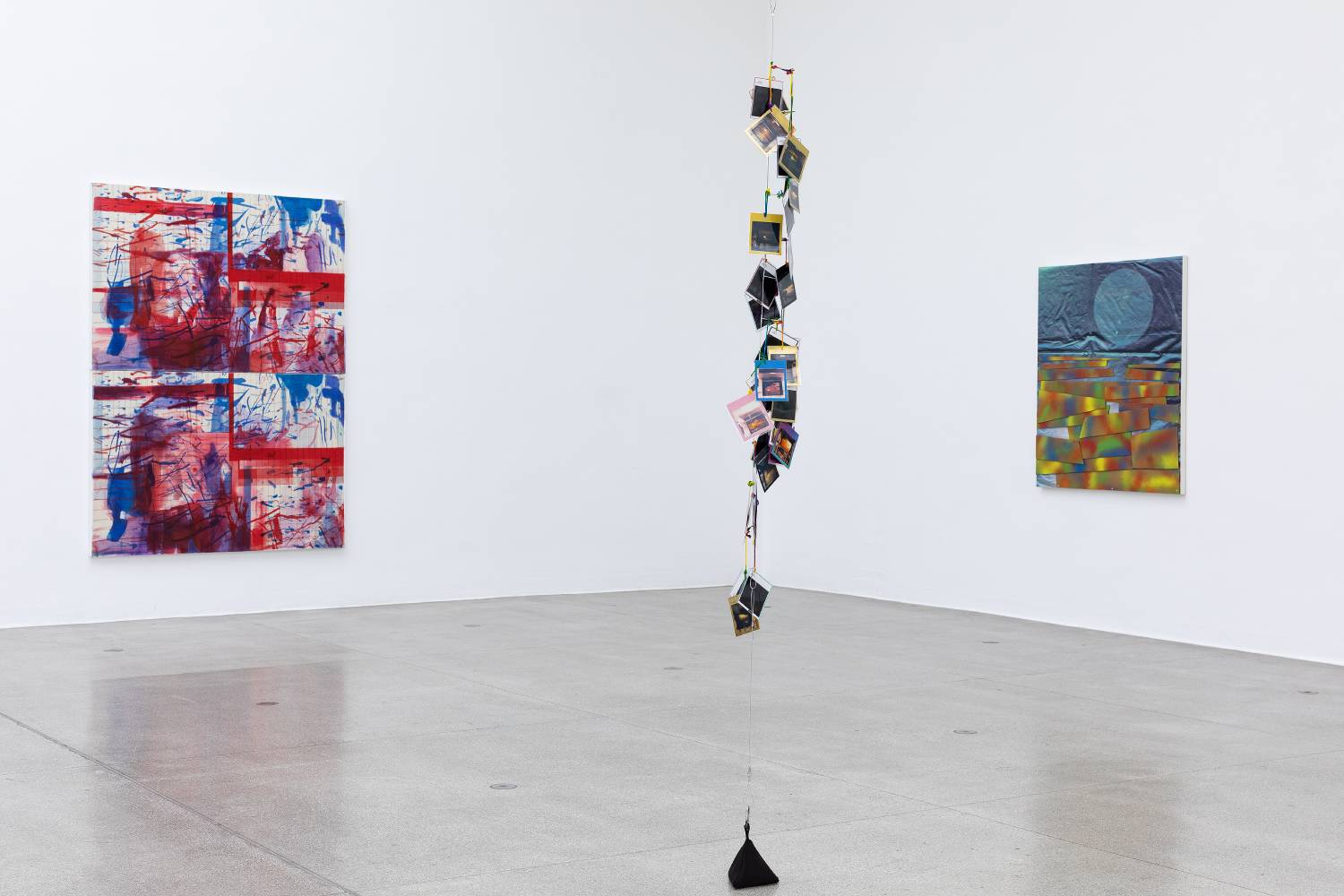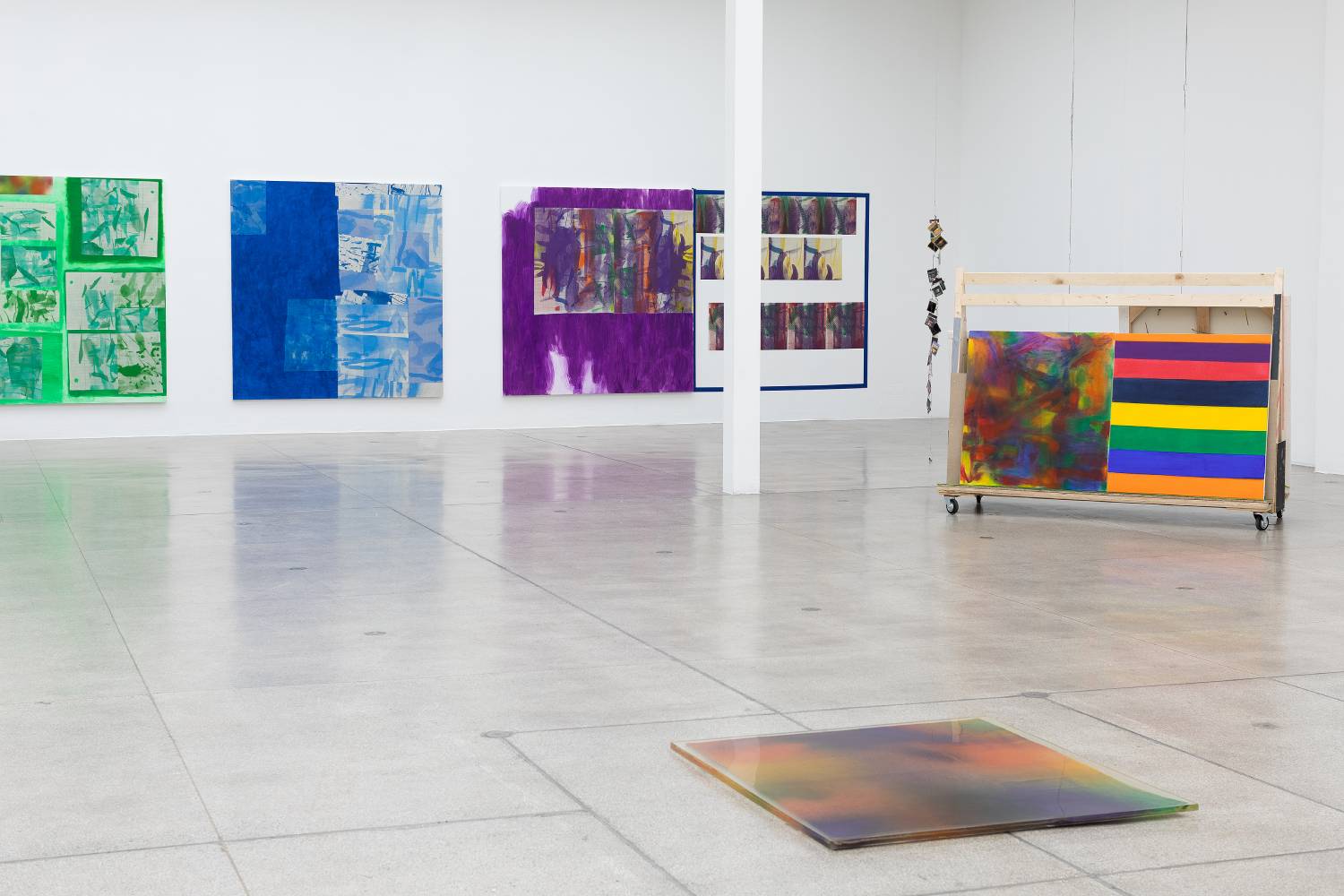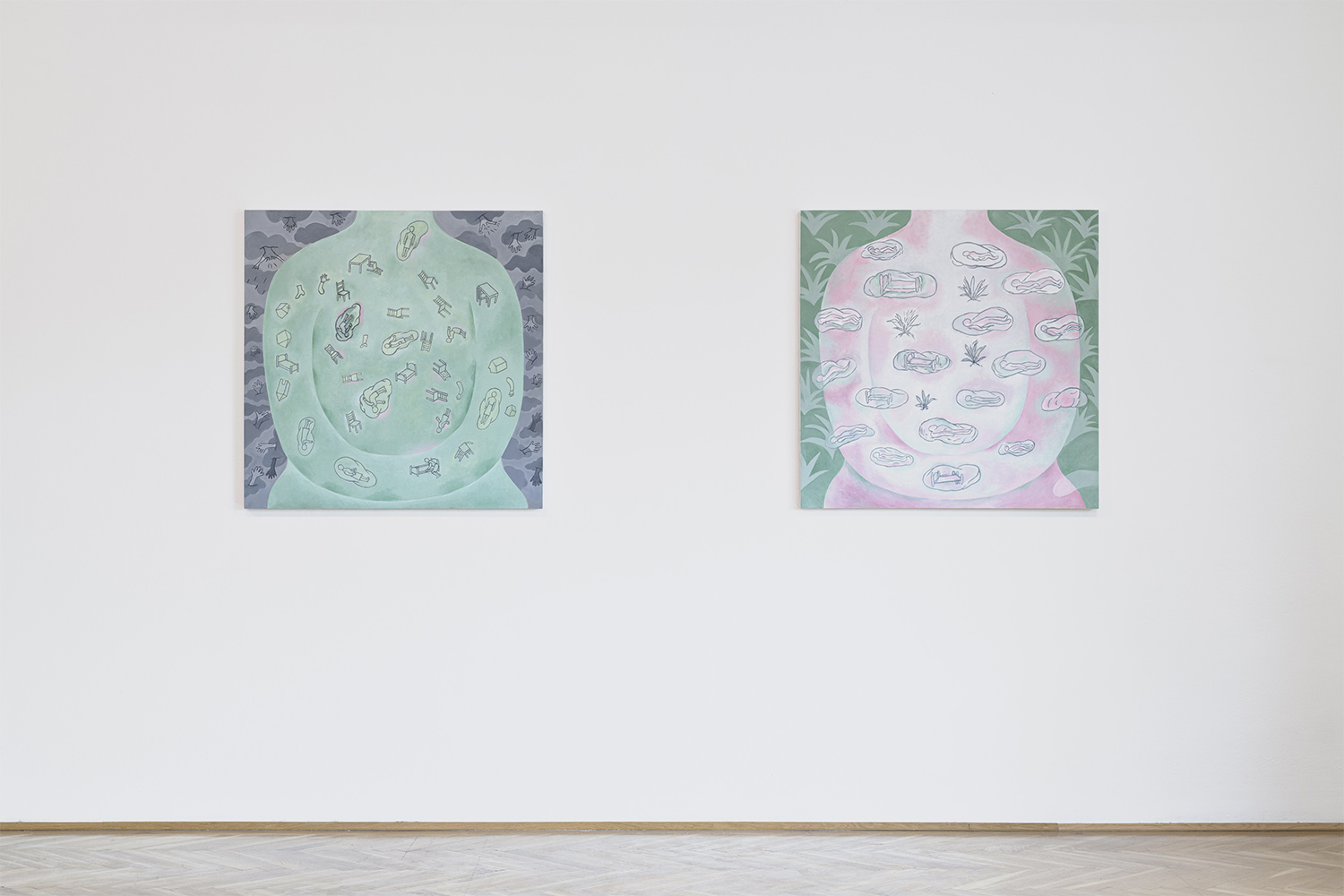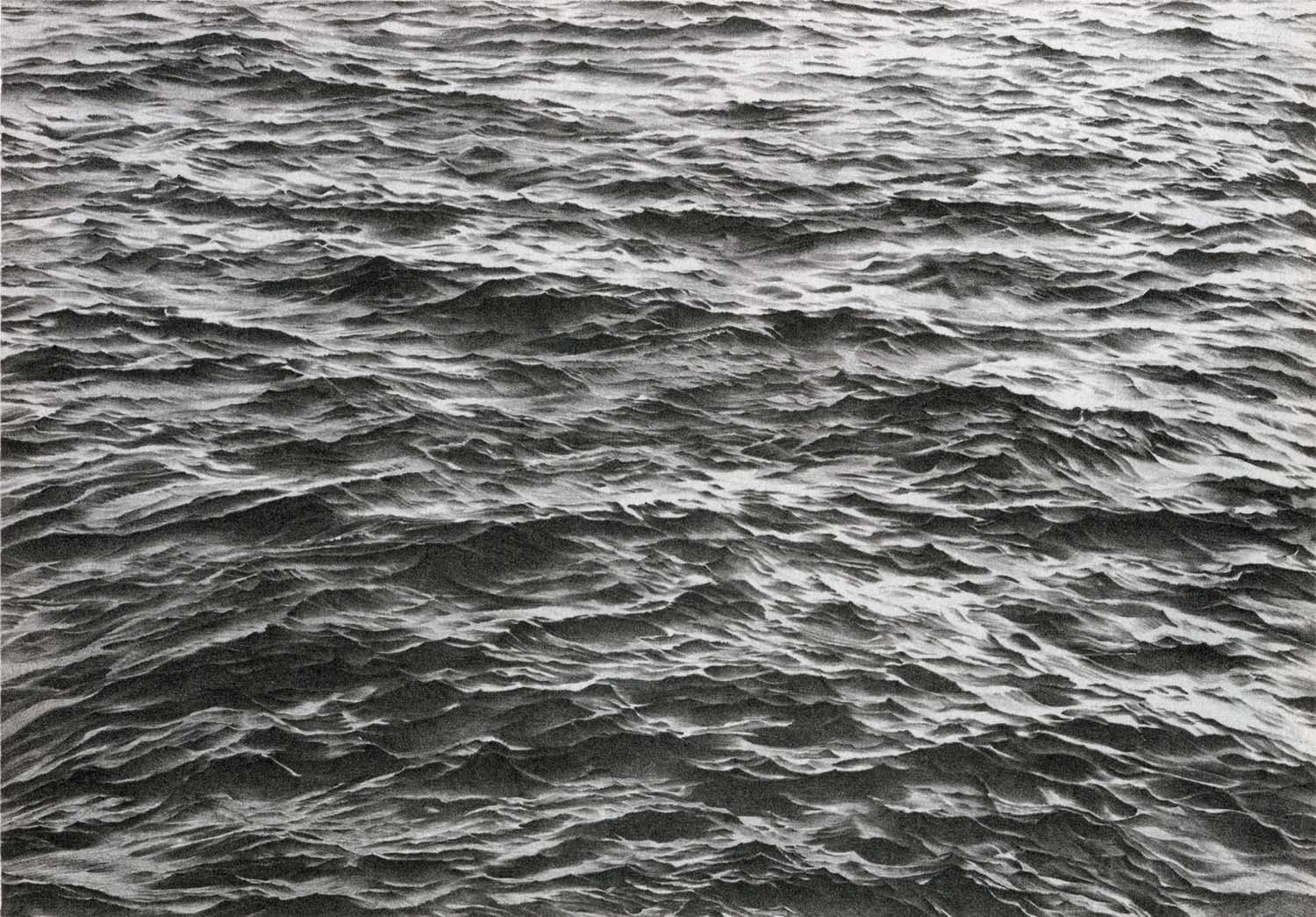Rochelle Feinstein’s major survey, “The Today Show,” at Secession in Vienna deeply resonates with the present moment. Curated by Damien Lentini, who worked in tight and contact in collaboration with the American artist, the show captures a sense of upheaval, absurdity, and humor while pushing the boundaries of painting and set design. Through an exploration of materiality and abstraction, “The Today Show” navigates the landscape of contemporary life, offering a candid commentary on our current reality and the complex relationship between art, politics, and everyday objects.
The title, “The Today Show,” immediately evokes the image of a media spectacle, a reflection of the hyper-commodified world we inhabit. Yet, in this context, it also serves as a pointed commentary on the present-day moment — a reference to the way the media and political narratives shape and distort our sense of reality. The exhibition feels like an attempt to pause, reflect, and question what today means in an age dominated by constant news cycles, sensationalism, and overwhelming political chaos. For those who visited on January 20 – like I did – the day Donald Trump officially returned to power, the show’s framing felt even more timely, almost as if it were an artistic response to the headlines of the hour.
Damien Lentini, working closely with Feinstein herself (a lifelong dream of his), approached the exhibition with a shared desire to create a space that didn’t just showcase art but was part of the art itself. The collaboration between curator and artist becomes a central point of the exhibition, seen not only in the works themselves but in the installation and set design. Lentini told me about their mutual passion for creating something that felt “authentically present” — something that both invoked the artist’s raw reality and embodied the everyday structures that shape our experiences. This vision came to life through the peculiar and often absurdist nature of the artworks and the set design, which included elements like painter’s tape, shopping bags, and Amazon boxes — objects often overlooked but that are integral to the infrastructure of our daily lives.
Feinstein’s approach to painting in “The Today Show” is characterized by an abstraction that strips away the idealized or utopian representations traditionally associated with fine art. Instead, her works confront the roughness and messiness of the real world, celebrating the imperfection and impermanence of the things we often take for granted. Lentini emphasized that Feinstein is not interested in the pristine aesthetics of traditional abstract painting; rather, she is concerned with the “gestural mark,” a signature move that embodies the artist’s physical presence and the directness of her process.
The abstract works on display are deeply connected to the artist’s relationship with her materials – materials that include not only paint but also unconventional surfaces like cardboard, twine, and scrap paper. In one series, she uses blue painter’s tape, an everyday object that is typically removed before an exhibition is set up, as a framing device. The decision to keep the tape visible, according to Lentini, reflects Feinstein’s desire to expose the structures of art-making itself, calling attention to the logistics, transport issues, and “behind-the-scenes” mechanics of the exhibition process. This was a recurring theme throughout the show, where the set design itself – featuring these same boxes, tapes, and crumpled shopping bags – became a part of the narrative. The walls of the gallery were marked out with painter’s tape, referencing the way exhibitions are often mapped out in advance, yet in Feinstein’s world, these preliminary marks are given a permanent place in the artwork itself.
One of the most striking works in the exhibition is Embedded, a piece where a crumpled shopping bag from Rome is encased in resin, floating like a magic carpet. Lentini recalled how it had to be transported flat due to its delicate nature, but the piece itself challenges the viewer’s expectations of lightness and heaviness, materiality and illusion. Feinstein’s use of the shopping bag here is deeply symbolic — this everyday object, often discarded without thought, is elevated to the status of fine art. It reflects the artist’s interest in the hidden value of mundane objects, much like the Amazon boxes that structure our lives, yet remain mostly invisible in their profound impact on how we experience the world.
The set design of the exhibition itself is a work of art, blending seamlessly with the artwork on display. The trolleys that move the pieces around the room create an interactive, almost performative quality. As viewers walk through the space, the placement of the works shifts, and the perspective changes. This fluidity reflects the shifting nature of reality itself, a constant rearrangement that mirrors the constant changes we witness in our social and political landscape.
A particularly poignant moment of the exhibition comes with the inclusion of the piece Henny Penny, a reimagining of the children’s story Chicken Little. The artist presents the small painting, which might otherwise go unnoticed, on the grandest wall of the gallery. In this playful yet sobering reworking, the idea of the sky falling becomes a metaphor for the anxieties that have defined our recent history, particularly in the wake of political upheaval. As Lentini pointed out, the work has taken on new meaning in the current climate, where we seem to be in a constant state of collective panic, whether in the face of global warming, political instability, or social unrest.
Ultimately, “The Today Show” is an exhibition that pushes boundaries — not just in terms of its content, but in how it approaches the process of creating and presenting art. It invites us to reconsider what is worthy of attention and to think critically about how we engage with the world around us. Through the collaboration between curator and artist, the show speaks to the chaotic, fractured nature of contemporary life while also offering a space for reflection. The exhibition becomes a mirror of the present – raw, messy, and in constant motion – encouraging viewers to stop, reflect, and ask: What does today mean, in this moment, for all of us?


